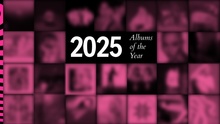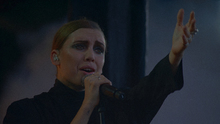STOP PRESS: arguably the most ambitious film ever, and the most visually stunning, The Fall by Tarsem Singh is playing in a limited number of cinemas this weekend. All you need to know is that it'll push all your Art-buttons (like Reggio's Powisqaatsi, or Barney's Cremaster Cycle), and your Entertainment-buttons at the same time (think Miyazaki's Spirited Away, and Pan's Labyrinth by Del Toro). This is too good to sink without a trace, but it's also at a crucial stage where it needs some word-of-mouth to become this year's Donnie Darko… and re-pay Tarsem's decision to sell his house, and spend 17 years making it, in 25 locations worldwide. SO, GO SEE IT, TELL EVERYONE, AND MAKE SURE IT GETS A PROPER RELEASE.
Right. Those who already knew about The Fall, or who Tarsem is, should be halfway out the door, but the rest of you may need some persuading. Here goes: Tarsem made a cult horror/thriller 8 years back, called The Cell, in which J-Lo ventures into the mind of a psychopath whose perversity is matched only by the baroque architecture of the world in which he's God/Emperor/Devil. The Cell wouldn't have been memorable without a visual style film that conveyed the omnipotence the plot demanded; in a sense, The Fall raises that to an unprecedented omnipresence or omniscience. That's to say, the locations include many of the most astonishing architectural achievements in the world (the largest maze, the most multi-layered castle), and many of the most beautiful sights in nature (the highest lake, the tallest dunes, a butterfly-shaped reef…). Tarsem's strict no-CGI policy, however, means that all the actors' reactions are as real as they can be… and so are yours. I'll return to this point, below…
Plot-wise, The Fall is simplicity itself: a hospitalized silent-movie stuntman entertains a 6-year old girl with an improvized story. His motives are dubious – he needs a favour – but he's also lonely, and we can see that his desire to entertain must come from somewhere other than self-love; as such, we're rooting for him to be redeemed. The five heroes of his quest-story are sworn enemies of "Governor Odious", for reasons ranging from the sublime to the ridiculous (revenge for being enslaved… rivalry as entomologists).
What's conceptually exciting is the subtlety with which we're shown the relationship between vision, imagination, and language (both linguistic and paralinguistic communication). For a start, there's the double barrier that is a child's limited knowledge of the world, and of English. Continually, we see aspects of the story (as imagined) follow from optical illusions, visual phenomena, but also homophonous puns. Much of the humour – and I do mean laugh-out-loud humour – derives from the split between (adult) narration and (childish) imagination: one of the heroes is "Charles Darwin", but – understanding only that he's "British" – the girl pictures him as a cleanshaven, effete fellow wearing long-johns, a bowler hat, and fur-coat dyed like a ladybird. That's one joke spoiled, but there are many more, and funny enough to make this a crossover hit for families. That said, they're also jokes that reveal the operation of the subconscious (as Freud proposed); providing gratification by relieving the mind of the pressure to resolve the contradictions of language. In Tarsem's world, all is possible, and all associations are true. Even where there's no grand point to make, innumerable details attest to the presence of the miraculous within the everyday (one definition of Magic Realism), and most of these aren't remarked upon – they're just slipped into scenes. The silhouette of the steam train, cast onto the river below; the keyhole acting as a pinhole camera, so that a horse & buggy are cast onto a wall, inverted.
Why is Tarsem's method so important? Isn't he just being bloody-minded and stubborn? Consider Indiana Jones IV – could you ever suspend disbelief? Didn't you feel unconvinced by the collapsing temple CG'd around the actors, because it was meant to be bigger than anything you'd ever seen before, with no regard to what might be impressive and credible? Didn't you feel insulted that the monsters were bigger in Return of the King than those in The Two Towers, as if we wouldn't notice the plot wasn't much better? The narrative of The Fall, however, was part-improvized by a 6 year old, with Tarsem matching the locations to a genuinely unfettered imagination; much of the remainder was selected from what best engaged her. These are pragmatic arguments against Hollywood's relentless inflation, and over-reliance on focus-groups, but there's an ideological or even metaphysical point here, too: the viewer is being given back their own innate ability to see the world as marvellous, using only the tools of their own imagination, rather than fostering a loathsome dependence on The Industry to dole out experiences that make false claims to be the telos and eschaton of sensation.
The film concludes with a comedy montage that I found curiously affecting. Like Reggio's Powisqaatsi, you can happily call this a love-poem to our planet (without the pessimism of Koyaanisqaatsi), but the final montage of stunts from black & white silent-movies suggests that this was always a love-poem to cinema & cinematography, too. The combination of the montage and the plot's final scene (I won't spoil it) underscores the power of fantasy to cut through a life tarnished by death and exploitation – not to excuse it, of course, but to cut through it. So go see: this is the world at its best, and storytelling (paradoxically) at its purest.
















